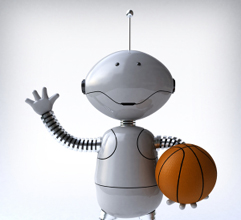
After some sluggish years with modest innovation in the toy industry, a new wave of truly transformational toys is underway. The innovations that are likely to have most impact are those that meet the changing attitudes and needs in the child market as well as reflecting sweeping transformational tech innovations outside of the toy industry.
Some of the most promising toys are remarkably low-tech in their design, and they answer emergent concerns around child development, learning and socialization. We may delineate three particular areas that the current crop of parents are particularly focused on:
- limiting screen time all while encouraging computer literacy and programming skills;
- empowering girls’ interest in and acuity for science, technology, engineering and mathematics (STEM) ;
- virtualization of toys, especially those that foster skills and empathy through interactive and immersive learning experiences.
Coding Companions: Play-i consists of two robots that teach kids 5 and up simple programming logic. Perhaps a sign that toy innovation is migrating into the science labs, Play-i is developed by former executives at Google, Apple, and Frog Design. Primo teaches kids aged 4 to 7 the foundations of programming. The toy consists of a wooden robot called Cubetto, a board that serves as a programming interface, and colored instruction blocks, which act as code and go in slots. Kickstarter funded Robot Turtles is a board game that "sneakily teaches" the basics of programming. Again, don’t be fooled by the low-tech formats.
STEM for girls: Goldie Blox is toolkit and a character that encourages girls to build machines. The toy concept uses a story narrative which is particularly useful for girls as they tend to be less spatial, but more literally inclined than boys. Roominate is another engineer-driven toy concept for girls - a kit that allows girls to build doll houses with the various electronic and mechanical elements that go along,
Augmented Reality: Animin is an advanced virtual pet concept that uses both artificial intelligence and augmented reality. The pet is projected onto any real life surface from a smart device and needs proper care from the child to thrive. Parents don’t have to worry about bulky tagalong items and snuggle-bunnies that get smeared with pasta sauce or lost at far away destinations. Meanwhile Cypher Entertainment is introducing Cypher Kids, a new line of Augmented Reality-powered apps and games for children. Some of the toys bring kids into a vivid virtual world that allow stories to come to life before their eyes or let them venture on 3D digging expeditions for dinosaurs.
Growing demand for computer scientists has spawned initiatives like Hour of Code, which inspired 15 million students in 170 countries learn computer coding last December alone. This STEM-related orientation is most strongly felt among parents of girls disappointed with recent half-hearted attempts at creating more “girl power” toys such as Lego Friends and Computer Scientist Barbie. The most common complaint is that these toys do very little in terms of teaching STEM related skills and continue to revolve around gender stereotypical themes like beauty and home making. While not throwing out the ‘girly’ elements with the bath water, new concepts use girls’ preferences as a means to grow their curiosity further. Goldie Blox and Roominate both come in color combinations girls tend to prefer and are based on well-tested girl themes such as dollhouses and narratives.
The most interesting implication of the new tech toys might be that while seeming ostensibly low tech, they are constructed with the distinctive goal of provoking tech literacy in children. Some of these toys, like the wooden Cubetto, look more like a traditional Montessori device than a robot. Writing in The Atlantic last year about the Touch-screen generation, Hanna Rosin discovered that parents working in the computer industry are often surprisingly luddite when it comes to shielding their children from excessive “screen time”. Common for all of these toys is that they take the kids away from the screen, while still encouraging tech literacy and learning through non-screen interfaces.